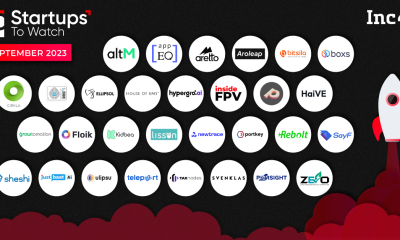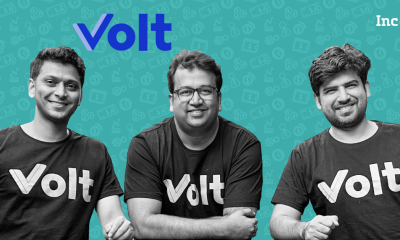Last week, General Motors summoned a small group of journalists to a Beverly Hills mansion to witness the future of home energy. And it started with a preemptive blackout.
Science
At a Beverly Hills mansion, where an electric truck is your only source of power

[ad_1]
As sunset fell across the Hollywood Hills, the chief engineer from General Motors flipped a breaker and disconnected the five-bedroom home from the grid. The lights went out, and less than 20 seconds later, GM’s home system powered it back up, pulling just 5kW or less from the fully charged Chevy Silverado EV parked in the garage.
When the lights came back on, the small crowd of journalists and GM Energy employees clapped, as if they were experiencing electricity for the first time.
When the lights came back on, the small crowd clapped, as if experiencing electricity for the first time
While a pickup truck may be an unusual site in the tony neighborhood, the company wanted to show off how its new energy subsidiary, GM Energy, can power an entire home using nothing but the Silverado as a mobile generator. GM wanted to demonstrate the new features of its vehicle-to-home (V2H) energy products at a splashy if mostly sterile mansion in the excessively wealthy Los Angeles enclave.
(In case you’re house hunting, the uber-lux Beverly Hills mansion that hosted GM’s demo is currently for sale for nearly $25 million — and is also rumored to have once belonged to Rat Pack member Dean Martin.)
Before the event, GM Energy installed a bidirectional charger, which the company calls the GM Energy PowerShift Charger, as well as its own V2H Enablement kit, which includes a power inverter, a home hub that includes a computer system that manages the loads through the house, and a backup battery. The full kit retails for $12,699, but buyers can opt for the individual components at the same price.
Using GM Energy’s equipment, the 10,000-square-foot mansion ran exclusively on battery power from the fully charged 215kWh Ultium battery pack underpinning the new Silverado EV for a few hours on a Thursday evening for the event.
But one couldn’t help but be struck by some of the cognitive dissonance on display. Amid cooling demand and flagging sales for EVs, automakers like GM are increasingly trying to market their plug-in cars as something like a Swiss Army knife for the electrical grid. The aim is to entice consumers into spending more on an EV to get access to all these extra features unavailable to anyone driving a car that runs on fossil fuels.
The home ran off the Silverado EV for the rest of the night, powering more than 50 overhead lights inside, music throughout, the kitchen where a full chef’s staff continued to turn out hot hors-d’oeuvres for guests, and exterior lighting that ran all the way down the 200-foot long driveway.
While EV technology opens up a number of new and innovative benefits for the consumer, and there are plenty of benefits to creating V2H systems for EVs, the clean energy market has put up somewhat mixed financial results in recent months. Still, GM remains bullish and barreling ahead with a team hired from private equity, climate tech, and more.
“This is truly unlocking the potential of GM’s electric vehicle lineup”
“This is truly unlocking the potential of GM’s electric vehicle lineup,” said Wade Sheffer, VP of GM Energy. “Having that technology, in that garage, prepared to do what it’s doing right now, raises this property’s valuation even more.”
“If you put one of these GM Home systems in every single customer’s home, you can create a decentralized grid,” added William Hotchkiss, head of safety and supplier quality, purchasing, and supply chain. “You can start to make it a connected network so that you can manage demand, and everyone will have more reliability.”
GM launched GM Energy in 2022 as a way to compete in the growing home energy market and has plans to sell additional equipment, including the Power Bank or stationary home battery system.
The automaker is no stranger to dabbling in areas that seem incongruent with its core automobile business. It made mechanical hearts in the 1950s and, more recently, respirators during the covid-19 pandemic.
Yet, in an era when EV sales have not grown as quickly as many automakers had anticipated, questions remain about whether it makes good business sense to get into home energy. The market isn’t small, but it’s not exactly growing, with current estimates putting its worth at around $150 billion.
Questions remain about whether it makes good business sense to get into home energy
Other automakers have also sensed an opportunity. Tesla touted its energy business, which includes home chargers, stationary batteries, and solar panels, as a bright spot during last month’s earnings call. The company recently announced that it would start rolling out bidirectional charging in 2025. In the home battery and solar installation market, Tesla dominates.
Hyundai offers its own home energy integration, which includes solar panels and battery storage, alongside its EVs like the Ioniq 5 and 6, which have bidirectional charging. But the automaker has said it’s more focused on vehicle-to-grid power over vehicle-to-home.
GM is taking a similar approach and partnering with Qmerit to help homeowners install their GM Energy technology. The company says that its new “holistic” home system will “help accelerate EV adoption.
As Sheffer put it during our interview, “General Motors simply believes we’re going to have mass adoption of EVs, and we’re going to invest in the whole ecosystem. We’re a separate company within the company, so General Motors invested in us to deliver all of the pieces of that possible.”
While the Silverado EV is the only current vehicle that has this V2H ability, eventually GM’s other electric vehicles, including the GMC Sierra EV Denali, Chevy Equinox and Blazer EVs, and Cadillac Lyriq, will get it, too, either via an over-the-air or dealer-installed update.
While these features are similar to those already offered on the Ford F-150 Lightning, GM is promising to make it more accessible to the masses. Its plan is to transform its complete lineup of EVs to enable V2H capabilities. But at launch, there are no plans to open the system up to third parties.
For example, the GM Home kit is currently not compatible with other EVs, including the Honda Prologue, which also gets GM’s Ultium battery. According to executives at last week’s event, there are no current plans to change that until ISO standards change.
“Right now, GM Energy offers the most comprehensive home charge ecosystem on the market, bar none,” Sheffer said. “Once we had the power bank and connection to solar, stop the tires.”
“Once we had the power bank and connection to solar, stop the tires”
Hotchkiss and Sheffer also confirmed that there are no current plans for GM to get into the solar panel manufacturing or installing business right now, given how fraught the space can be. (The company previously said it would work with third-party solar providers, like Sun Power.) Plans to allow customers to sell excess energy back to the grid are still in the works, according to Sheffer, noting that GM is currently piloting some smaller programs with utilities across the nation.
These backup power systems essentially provide microgrids for communities and homeowners looking to insulate themselves from blackouts due to extreme weather resulting from climate change.
As the world heats up and climate change stretches the electrical grid closer to its limits, consumers are increasingly looking for ways to ensure they still have access to reliable power. Since EVs spend the majority of their time parked in home garages and plugged in, GM sees an opportunity to leverage those parked EVs for power storage. The demonstration last week shows what that might look like.
Politics are also at play in the energy space. As demand for electricity grows, coal plants close, and more solar and wind power come online, some politicians and critics of clean power see the potential for a power reliability crisis to increase. By providing a way for people to power their homes when the grid goes down, GM says it is opening new opportunities for individual consumers. And with Tesla’s polarizing CEO Elon Musk increasingly alienating some of his most loyal potential customers, GM offers a less “political” alternative.
It also turns out that consumers want these kinds of features from their EVs, at least according to a recent study by JD Power. The study found that over a third of EV owners said they were interested in bidirectional charging as a way to make money by selling power back to the grid and to help balance peak electrical demands.
While it’s still very early days for GM Energy and its suite of new features supporting V2H support, executives are positive about the future of the venture. “GM is an automobile company, pulling from the grid. It only makes sense that we have the whole ecosystem,” Sheffer said. “That’s why GM said we’re going to pioneer this. If we don’t start, nobody is ever going to get there. So here we go.”
This was no temporary solution, either. GM executives promised that the mansion could run for three to four days at that level of consumption before fully depleting the battery. When I left at around 9:30PM, the charge on the Silverado EV had only dropped by 1 percent.
[ad_2]
Source link
Science
Starlink Mini brings space internet to backpackers

[ad_1]
SpaceX’s Starlink internet-from-space service is already available for boats, planes, vanlifers, Amazonian villages, and rural homes in over 75 countries — now it’s coming to backpackers.
The new compact DC-powered Starlink Mini is about the size of a thick laptop and integrates the Wi-Fi router right inside the dish. And despite using less power than other Starlink terminals, it can still deliver speeds over 100Mbps.
“This product will change the world,” claimed SpaceX CEO Elon Musk on X, saying it took less than five minutes to setup.
Notably, the Mini kit consumes an average of just 20-40W compared to the 33-62W we measured just two years ago with a Standard Actuated dish and separate AC-powered Wi-Fi router. That means you can power the Mini dish for two to three hours from something like an Anker Prime 27,650mAh (99.54Wh) power bank, or a little over an hour with smaller 10,000mAh (40Wh) portable batteries you probably already have laying about. It requires a USB-C PD power source with a minimum rating of 100W (20V/5A).
The Mini dish measures 11.75 x 10.2 x 1.45 inches (298.5 x 259 x 38.5mm) and weighs just 2.43 pounds (1.1kg), or 3.37 pounds (1.53kg) with the 49.2 foot (15m) DC power cable and kickstand. It has an IP67 rating meaning it’s protected from dust and rain, including short periods of water immersion.
In the US, Starlink Mini is an add-on to Residential plans — at least for now. The Mini kit costs $599 which is $100 more than the standard dish, and will cost an extra $30 per month to add the Mini Roam service to existing $120 Residential plans. That gives Starlink Mini users up to 50GB of mobile data each month, with the option to purchase more for $1 per GB, according to early-access invitations sent to some exiting US Starlink customers.
While Starlink Mini is new to the US, a Starlink support page says it’s already available in Colombia, El Salvador, Guatemala, and Panama where it can be purchased with Mini Service or Mobile – Regional Service plans. In those countries, there’s no data or speed caps to use Mini, and in-motion and ocean use is not allowed. SpaceX says it’ll expand to more markets over time.
“Our goal is to reduce the price of Starlink, especially for those around the world where connectivity has been unaffordable or completely unavailable,” reads the Starlink support page. “In regions with high usage, like the US, where Starlink Mini places additional demand on the satellite network, we are offering a limited number of the Starlink Mini Kits to start at a higher price point.”
As a standalone service, Starlink Mini could be transformative for anyone in need of an inexpensive and sharable internet service that efficiently sips DC battery power. This includes families that depend upon a cobbled together solar generator for power, a squad of soldiers trying to fight back an invasion, or just bikepackers and overlanders taking the road less traveled.
[ad_2]
Source link
Science
Elon Musk has another secret child with exec at his brain implant company

[ad_1]
Elon Musk, who has long touted claims about the world’s supposed depopulation crisis, had another child with an executive at his brain implant company Neuralink, according to a report from Bloomberg. Neuralink director Shivon Zilis reportedly had the child with Musk earlier this year.
As noted by Bloomberg, Musk has repeated that line several times in the past, including during a 2022 interview with Tucker Carlson and again during an interview at the Milken Institute conference in May. He told Carlson “a collapsing birth rate is the biggest danger civilization faces, by far.” In 2021, Musk’s nonprofit organization donated $10 million to the University of Austin to fund the Population Wellbeing Initiative, a research group that studies the human population.
The revelation also follows multiple reports alleging inappropriate conduct from Musk in the workplace and with subordinates. A recent report from The Wall Street Journal said Musk had a sexual relationship with a former SpaceX intern who later became one of the company’s executives. Another employee says she refused Musk’s requests to have children with him several times, according to the Journal.
[ad_2]
Source link
Science
Youth plaintiffs in Hawaii reach historic climate deal

[ad_1]
A group of young plaintiffs reached a historic climate settlement with the state of Hawaii and Hawaii Department of Transportation in a deal that will push the state to clean up tailpipe pollution.
The 13 youth plaintiffs filed suit in 2022 when they were all between the ages of 9 and 18. In the suit, Navahine F. v. Hawaii Department of Transportation (HDOT), they alleged that the state and HDOT had violated their right to “a clean and healthful environment,” which is enshrined in Hawaii’s constitution.
“We got what we came for, and we got it faster than we expected.”
The settlement, reached on Thursday, affirms that right and commits the DOT to creating a plan to reach zero greenhouse gas emissions from transportation by 2045. To hit that goal, the state will have to dedicate at least $40 million to building out its EV charging network by the end of the decade and complete new pedestrian, bicycle, and transit networks over the next five years. The settlement also creates a new unit within HDOT tasked with coordinating CO2 emission reductions and a volunteer youth council to advise HDOT.
“I am so proud of all the hard work to get us to this historic moment. We got what we came for, and we got it faster than we expected,” the lead plaintiff, Navahine F., said in an emailed statement.
Back in 2018, Hawaii committed to reaching net-zero carbon dioxide emissions by 2045 — in line with what climate research determined was necessary to meet the Paris climate accord goal of stopping global warming. But the state wasn’t doing enough to reach that goal, the plaintiffs alleged. Transportation makes up the biggest chunk of the state’s greenhouse gas pollution.
“Climate change is indisputable,” Ed Sniffen, HDOT director of transportation, said in a press release. “Burying our heads in the sand and making it the next generation’s problem is not pono.”
Youth in Montana scored another historic legal win last year after the first climate case of its kind to go to trial. A state court found that a Montana policy that barred officials from considering the consequences of climate change when permitting new energy projects violated the rights of the plaintiffs to a “clean and healthful environment.” The lawsuit in Hawaii was expected to be the next landmark youth climate case to go to trial in the US. Several other state and federal youth climate suits are still pending in the US.
[ad_2]
Source link
-

 Startup Stories9 months ago
Startup Stories9 months agoWhy Millennials, GenZs Are Riding The Investment Tech Wave In India
-

 Startup Stories9 months ago
Startup Stories9 months agoStartups That Caught Our Eyes In September 2023
-

 Startup Stories9 months ago
Startup Stories9 months agoHow Raaho Is Using Tech To Transform India’s Fragmented Commercial Trucking
-

 Startup Stories8 months ago
Startup Stories8 months agoMeet The 10 Indian Startup Gems In The Indian Jewellery Industry’s Crown
-

 Crptocurrency4 months ago
Crptocurrency4 months agoLither is Making Crypto Safe, Fun, and Profitable for Everyone!
-

 Startup Stories9 months ago
Startup Stories9 months agoHow Volt Money Is Unlocking The Value Of Mutual Funds With Secured Lending
-

 E-commerce9 months ago
E-commerce9 months agoTop Online Couponing Trends To Watch Out For In 2016
-

 Startup Stories9 months ago
Startup Stories9 months agoWhy Moscow-Based Kladana Considers Indian SME Sector As The Next Big Market For Cloud Computing




